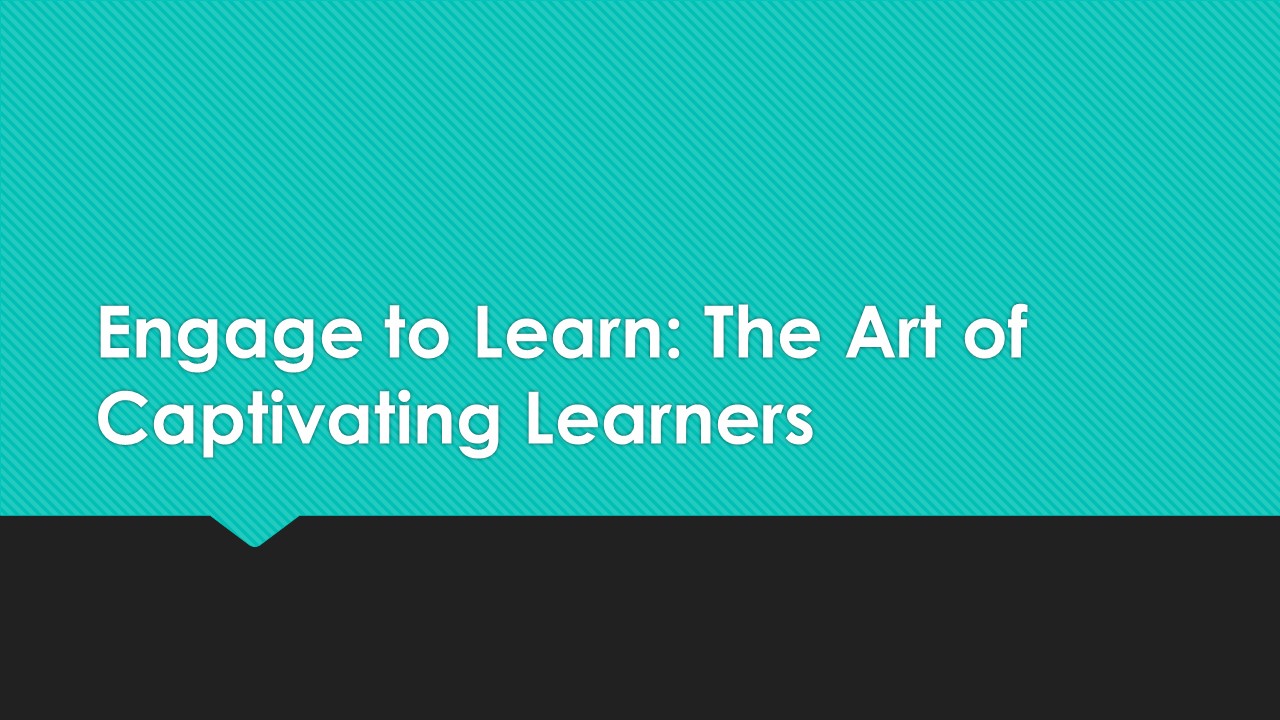learner engagement - PowerPoint PPT Presentation
Title:
learner engagement
Description:
Learner engagement refers to the level of involvement, interest, and interaction exhibited by learners in an educational or training context. It represents the extent to which learners actively participate, interact, and invest their attention, effort, and motivation in the learning process. High learner engagement is associated with better learning outcomes and a more positive learning experience. – PowerPoint PPT presentation
Number of Views:2
Title: learner engagement
1
Engage to Learn The Art of Captivating Learners
2
What is Learner Engagement?
- Learner engagement can be defined as the level of
interest, attention, and involvement that
learners demonstrate while participating in a
learning activity. Engaged learners are motivated
to learn, actively seek out information, and are
willing to invest time and effort into their
learning. - Examples of learner engagement include asking
questions, participating in discussions,
completing assignments on time, and seeking
feedback. Engaged learners also tend to have a
positive attitude towards learning and are more
likely to persist through challenges and
setbacks.
3
The Benefits of Learner Engagement
- Learner engagement is not just a nice-to-have,
it's essential for achieving positive learning
outcomes. Studies have shown that engaged
learners are more likely to retain information,
apply what they've learned, and perform better on
assessments. - But the benefits of learner engagement go beyond
academic success. Engaged learners are also more
motivated, more confident in their abilities, and
more likely to engage in lifelong learning. By
fostering learner engagement, we can help our
learners develop the skills and mind-set needed
to succeed in today's rapidly changing world.
4
Barriers to Learner Engagement
- One of the most common barriers to learner
engagement is a lack of relevance. If learners
don't see how the material applies to their lives
or goals, they may tune out or disengage. To
overcome this barrier, it's important to make
connections between the content and real-world
scenarios or personal interests. For example, if
teaching a math concept, use examples from sports
statistics or cooking recipes that are relevant
to the learners' interests. - Another obstacle to learner engagement is a lack
of feedback or interaction. Learners need to know
how they're doing and receive guidance on how to
improve. Providing regular feedback and
opportunities for interaction, such as group lack
of relevance is one of the most common barriers
to learner engagement discussions or peer review,
can help keep learners engaged and motivated.
5
Techniques for Fostering Learner Engagement
- Gamification Incorporating game-like elements
into learning activities can increase motivation
and engagement. For example, creating a
leaderboard for a quiz or adding badges for
completing certain tasks. - Peer Learning Encouraging learners to work
together in groups can promote collaboration and
engagement. This can include activities such as
group projects, discussions, or peer review. - Personalized Feedback Providing individualized
feedback can help learners feel more invested in
their progress and motivated to continue. This
can include feedback on assignments, quizzes, or
even personalized coaching sessions.
6
Measuring and Evaluating Learner Engagement
- Assessing and measuring learner engagement is
crucial to improving learning outcomes. There are
several tools that can be used for this purpose,
including surveys, analytics, and observation.
Surveys can be used to gather feedback from
learners about their level of engagement and
satisfaction with the course. Analytics can
provide data on how learners are interacting with
the course content, such as time spent on each
module or assignment. Observation allows
instructors to directly observe learners'
behaviour and engagement in the classroom. - Once data has been collected, it's important to
use it to improve learning outcomes. This can be
done by identifying areas where learners are
struggling or disengaged and making changes to
the course content or delivery method. For
example, if analytics show that learners are
spending very little time on a particular module,
instructors can review the content and make
changes to make it more engaging and relevant. By
using data to inform instructional decisions,
instructors can create a more effective and
engaging learning experience for their students. - Reference
- Virtual Reality in Training and Assessment
- Best eLearning Platforms Enhancing Training and
Assessment with Virtual Reality

